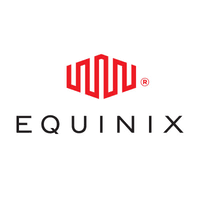
Nearly three-quarters (71%) said they plan to move more of their IT functions to the cloud. Two-thirds (66%) of these plan on doing so within the next 12 months, despite nearly half (49%) of respondents still seeing perceived cybersecurity risks around cloud adoption as posing a threat to their business.
Cloud strategies considered include a dispersed multicloud approach where a single company will use different cloud providers for different functions. This is a major trend emerging in the marketplace and corroborated by the study. 45% of IT leaders say their technology strategy includes moving to a multicloud approach, which will have significant implications for the industry as businesses continue to diversify their portfolio of cloud providers. But while there is clearly a strategic shift underway, multicloud adoption is far from ubiquitous: fewer than one in five (17%) IT decision-makers said their business is currently deploying across multiple clouds. Hybrid cloud deployments—whereby companies use a combination of one or more public cloud providers with a private cloud platform or IT infrastructure—are more commonplace, with 34% of IT decision-makers globally already having hybrid strategies in place.
To cater to the rapid adoption of hybrid multicloud solutions, Equinix recently announced it has acquired bare metal automation platform leader Packet. Coupled with Equinix’s flagship cloud connectivity platform, Equinix Cloud Exchange Fabric™ (ECX Fabric™), which supports hybrid multicloud strategies by directly, securely and dynamically connecting distributed infrastructure and digital ecosystems globally, the service enables companies to bypass the public internet and make the move to the digital edge—whilst avoiding unnecessary cybersecurity risk.
Implementing an interconnected fabric of network and cloud hubs at the digital edge in this way simplifies the complexity of hybrid IT and provides the choice, scale and agility required for current and future digital business requirements. By providing this critical infrastructure in 55 markets across the world, Equinix is ensuring its customers are better equipped to securely reach everywhere, interconnect everyone and integrate everything that matters to their business.
Highlights/Key Facts
• The survey of 2,485 IT decision-makers across 23 countries was conducted online between 1 and 16 August 2019.
• 71% of IT decision-makers plan to move more IT functions to the cloud in the future. Key functions being moved to the cloud include productivity tools, legacy applications and databases.
• Of the IT leaders planning to move these functions to the cloud, two-thirds (66%) plan on doing so within the next 12 months.
• 49% of IT decision-makers surveyed globally see perceived cybersecurity risks around cloud adoption as being considerably threatening to their business.
• 45% of IT leaders around the world are planning to move to a multicloud technology strategy, but only 17% said they are currently deploying across multiple clouds.
• Globally, 44% of IT infrastructure is currently on the cloud. In the Americas this figure is higher at 49%, while in EMEA it is just 40%. Asia-Pacific matches the global average at 44%.
• 50% of IT decision-makers globally cite moving their infrastructure to the digital edge as one of the biggest priorities of their technology strategy. This figure jumps to 60% in the Americas.
• The third volume of the annual Global Interconnection Index (GXI) forecast that private connectivity at the edge would grow by 51% compound annual growth rate (CAGR)—exceeding a remarkable 13,300+ Tbps by 2022.
• By combining Equinix’s Network Edge services with ECX Fabric™, businesses can deploy virtual edge devices and interconnect them to clouds and network providers located in new global markets with low latency—extending their reach to potentially thousands of new business partners around the world.
• Tim Hinchley, Head of Cloud and Infrastructure Architecture, the Driver and Vehicles Standards Agency (DVSA):
“It’s interesting to see this further confirmation that the shift to the cloud is something that is happening across industries and countries. DVSA is embracing new technologies to improve road safety—whether that's through better, bigger services for 40 million customers a year, or through targeted, data-led enforcement. Our partnership with Equinix has allowed us to move a number of our business-critical applications into the public cloud. Leveraging ECX Fabric enables us to scale up and out as much as we want and whenever we need—vital for an agency working across 400 sites, from the Shetlands to the Scilies. From a network connectivity perspective, being able to jump from cloud vendor to cloud vendor, whenever we please, offers our IT and overall strategies real flexibility, helping us provide world-class digital services.”
• Richard Villars, Vice President, Datacenter & Cloud, IDC:
“As enterprises respond to the challenges posed by COVID-19, they are focusing on maintaining and enhancing their products and services through delivery of better digital experiences and faster capitalization on real-time data; all of which depend upon more effective use of many different cloud environments and the extension of IT resources to edge locations near where we are working and living. For most organizations, however, these goals remain a challenge as their IT teams struggle to find access to the right cloud and edge environments. Companies like Equinix, that provide a broad portfolio of facilities and connectivity options as well as easy access to a broad array of hybrid and multicloud service providers, are in a strong position to help enterprises respond to new needs in both the core and edge of their business.”
• Zdravko Nikolov, Managing Director, Bulgaria, Equinix:
“Although the digitalization process in Bulgaria had already started, the current circumstances have led to a much quicker adoption in many areas. In some instances it essentially had to be done within a weekend. Reviewing IT infrastructures and adopting hybrid multicloud strategies are prerequisites for further future development in connecting even more customers, employees and partners. It will be interesting to see how the market develops, especially considering this new potential and possible broader demand for digitized services. Equinix is responding accordingly.”
• Claire Macland, Senior Vice President, Global Marketing, Equinix:
“A worldwide shift towards hybrid multicloud deployments was well underway ahead of the COVID-19 outbreak, with enterprises looking to gain a competitive business advantage through scalable solutions accessible from dispersed locations. The results of this study, however, showed there remained a gap between businesses’ ambitions and implementation of cloud adoption. It will be interesting to see how quickly this accelerates given current digital demands. Rearchitecting IT infrastructure, including the adoption of cloud, is a pivotal reason companies come to Equinix—to deploy hybrid multicloud architectures which securely transmit data over dedicated, private networks; thus, optimizing IT infrastructures whilst shrinking attack surfaces.”
You may download the full report here.



